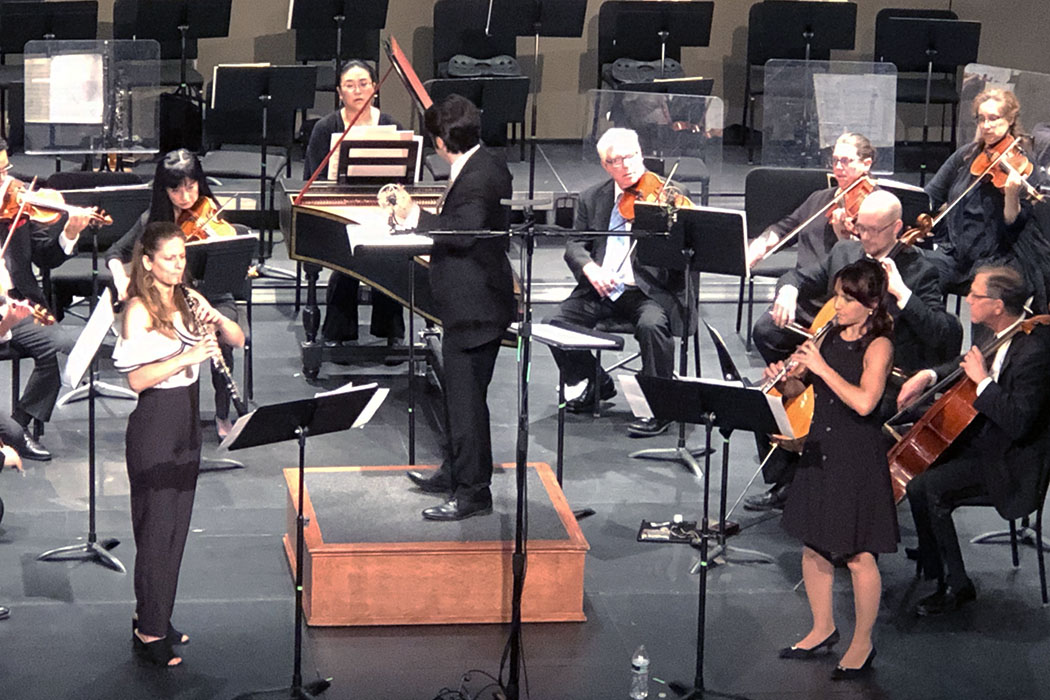Is it possible that the Knoxville Symphony Orchestra saved the best for its last Chamber Classics Series concert of the 2022-23 season?
Clearly, Sunday afternoon’s musical outing was one that not only looked intriguing on paper, but sounded great in the marvelous acoustics at the Bijou Theatre. But, there was more to it—and the large crowd seemed to sense that there was a special adventure afoot.
At first glance, Maestro Aram Demirjian’s program seemed like a theme-defying collection of disparate works: two concertos for double oboes—one Baroque and one contemporary—a Baroque sound-alike, chamber orchestra suite, and…a Beethoven Symphony. However, by the end of the first half, it all began to make sense. Adolphus Hailstork’s Baroque Suite, Antonio Vivaldi’s Concerto for Two Oboes in D minor, RV 535, and the riotous Extra(ordinarily) Fancy by the young Vietnamese-American composer Viet Cuong, seemed to gently re-tune one’s sonic palette, allowing Beethoven’s Eighth Symphony on the second half to be experienced with fresh ears.
In addition to providing opportunities for works that don’t really fit into other series, the Chamber Classics Series also utilizes KSO players in featured solo roles. Certainly deserving of that spotlight were KSO Principal Oboe Claire Chenette and KSO Second Oboe Ayca Yayman, who brilliantly handled the Vivaldi and Viet Cuong works back to back. The traditional virtuosity of Chenette and Yayman in the Vivaldi was matched in Extra(ordinarily) Fancy with an embrace of the free-wheeling spirit of the work and its willingness to bend rules. The composer explored the use of “multiphonics” that are created when the oboe performer uses incorrect fingering to create a squawking effect with multiple pitches.

From Viet Cuong’s program notes: “…[the oboists] mock each other, squawk at each other, and even talk over each other. The orchestra observes and joins in as the oboists continually bicker back and forth, all culminating in a reconciliation where the once-hesitant oboist learns (and even enthusiastically performs) a few multiphonics alongside the other oboist.”
Most assuredly a novelty piece, the work as performed here by Demirjian and the KSO transcended any possible misjudgments with its virtuosity requirements, its experimental-esque nature, and the sheer entertainment value of the orchestral work as a whole.
Admittedly, it is fate and proximity to the monumental Ninth that causes Beethoven’s Eighth Symphony to suffer in reputation, but any such anguish is completely undeserved. Clearly, Demirjian and the orchestra shared that opinion, for they rendered a crisp, clever, and energetic Eighth that had all the spicy tempo, subtle humor, and ingenuity that the composer intended. Although one would have struggled to predict it, the Beethoven symphony was a perfect climax, not just to a stunningly fun and virtuosic afternoon, but to a season of eclectic and ear-opening series programming.








